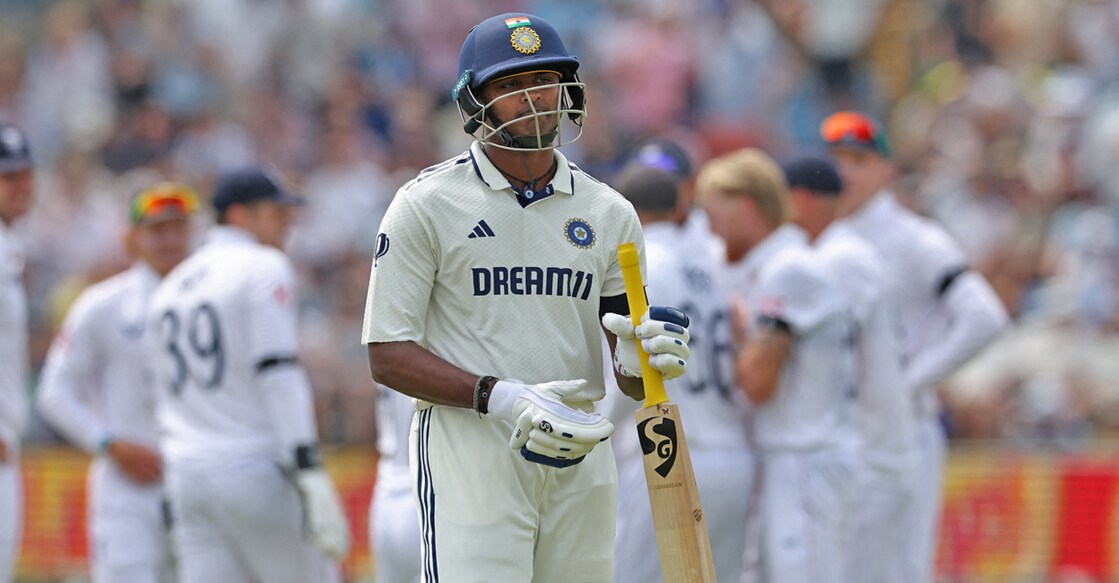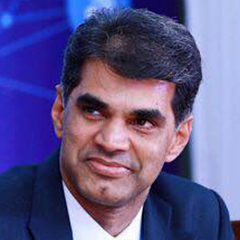Duck on debut: Sai Sudarshan's not the first, won't be the last

Mail This Article
What does one feel when the most awaited moment in your life suddenly ends in desolation and deep disappointment? Millions of aspiring cricketers around the globe will vouch that turning out for the country in Test cricket is their ultimate dream.
The ambition to represent the country in the most traditional form of the game motivates players to sacrifice all comforts and luxuries and work with a single-minded focus during their formative years.
The elation and euphoria of achieving this goal cannot be described simply. Debutants are usually so pumped and excited that they barely manage to sleep a wink on the night before the opening day of their first Test.
Sai Sudarshan also would have gone through this gamut of emotions in the days prior to the commencement of play in the ongoing first Test of the series against England at Leeds. He forced his way to the squad on the strength of his performances in the last edition of the Indian Premier League (IPL), where he won the Orange Cap for being the highest run scorer. But, his first appearance in Test turned out to be a disaster as he nibbled the fourth delivery he faced to be dismissed, caught behind the stumps, for a duck.
The jaunty stride with which he walked to the middle at the fall of the first wicket was replaced by a sluggish gait as he trudged his way back to the pavilion. His disappointment would have increased manifold when he saw his fellow willow wielders make merry on a placid pitch against an average bowling attack, an ideal combination for a debutant to exploit in any form of the game.
Though it must have been highly disappointing for Sai Sudarshan to return to the dressing room without troubling the scorers, he can take heart from the fact that many great players of the past commenced their careers with a zero against their name in their first outing with the bat. In Indian cricket, the most cited example is Gundappa Viswanath, the supreme stylist with the willow and the mainstay of the Indian middle order during the 1970s.

Viswanath debuted against Australia in the second Test of the series in 1969-70 at Kanpur and was dismissed by fast bowler Alan Connolly without scoring in the first innings. He was understandably dejected but came back strongly in the second innings to score a brilliant unbeaten 137 and thus redeemed himself. Viswanath went on to score 6,020 runs and struck 13 more hundreds in a career spanning 91 Tests.
In his autobiography, “Wrist Assured”, co-written with journalist R Kaushik, Viswanath explained his thoughts and emotions when he was dismissed for a duck on his debut. The support the team's senior members gave him helped him overcome feelings of failure and negativity that threatened to overwhelm him.
More important was the role played by Eknath Solkar, his roommate, in lifting his spirits after the disappointing dismissal in the first innings. Incidentally, Solkar was also dismissed without scoring on his debut against New Zealand at Nagpur a couple of months before and knew what Viswanath was going through. But what had the maximum impact on this youngster and helped him to relax were the golden words spoken by his skipper, Mansur Ali Khan Pataudi, when he was waiting to bat in the second innings.
It is interesting to see that Sachin Tendulkar and Mahendra Singh Dhoni, two legends in Indian cricket, too started their career in One Day Internationals (ODI’s) with a duck. Tendulkar made his entry into the world of international cricket during the tour of Pakistan in 1989. After proving his mettle in Test matches, he made his debut in ODI at Gujranwala, where he was dismissed, caught by Wasim Akram off Waqar Younis, after facing only two balls.

But he came back strongly during the very next game, which unfortunately was not given the status of an ODI, by scoring a whirlwind 53 off only 18 balls. In the process, he struck veteran leg spinner Abdul Qadir for 28 runs in an over, which included four sixers!
Dhoni, on the other hand, was run out off the very first ball he faced in international cricket when his attempt to steal a quick single resulted in confusion, leading to his dismissal. This took place in the first ODI at Chattogram, during India’s tour to Bangladesh in 2004. Dhoni had to wait for another five months for his first century in ODI’s which took place against Pakistan at Visakhapatnam, where he scored 148 runs off 123 balls, including four sixers.
Amongst other cricketing playing countries, Mervin Atapattu, the Sri Lankan opening batsman, is the best-known example of the worst start in Test cricket. He debuted against India in the one-off Test at Chandigarh in 1990, where he bagged a pair. Worse was to follow, as in his first six innings in Tests, he could scratch together only a single run! But the Sri Lankan selectors kept their faith in him, and he blossomed into a top-class batsman, as his career records of 5,502 runs in tests and 8,529 in ODIs would testify. Here one should also praise the Sri Lankan selectors, who kept their faith in this cricketer, who went on to repay them with his massive output from the willow.
Graham Gooch, who spearheaded England’s batting and led their side from 1989 to 1993, had a miserable initiation into Test cricket. Hailed as a youngster who held lots of promise, he was included in England for the first Test of the series against Australia in 1975, at Birmingham, when only 21 years old.
Pitted against the Aussie fast bowling trio of Dennis Lillee, Jeff Thomson and Max Walker, Gooch failed to open his account in both innings, being dismissed in an identical manner, caught by Rodney Marsh, behind the wicket.
He fared better in the next game at Lord’s, scoring 6 and 31, but was so uncomfortable against fast bowlers that the selectors dropped him after this match. When he returned to the side in 1978, he was a different batsman, having ironed out all flaws in his technique and temperament, and earned a highly deserved reputation as one of the best batsmen against fast bowlers during the 1980s.
Another former England captain who started his test career with a zero against his name was Mike Atherton, who debuted against Australia at Nottingham in 1989. Batting at No. 3 in the order, Atherton lasted only two balls in the first innings before being trapped in front of the wicket by Terry Alderman.
He fared better in the second knock, grinding his way to a patient 47 off 127 balls. Atherton went on to score 7728 runs in tests, but more importantly, he held the England batting together during the 1990s, one of the worst periods in their cricket history.
One lesser-known fact about Sunil Gavaskar is that he was dismissed for a duck on his debut in the Ranji Trophy championship, which took place against Mysore (present-day Karnataka) in the semi-final match of the 1969-70 season. After Mysore made 217 in the first innings, Gavaskar and Ashok Mankad opened the batting for Mumbai (then Bombay).
Gavaskar took guard against Rajappa, who was known for bowling big in-swingers. Gavaskar played defensive shots off the first three balls which swung inwards but missed the line when Rajappa straightened the next delivery and was trapped plumb in front. Even worse, he was booed by the crowd at Brabourne Stadium when he returned to the pavilion. But, he scored an unbeaten 27 in the second innings and retained his place in the side for the finals, where he struck the first century of his distinguished Ranji Trophy career. And there was no stopping him after that!
Thus, Sai Sudarshan can find comfort in that many of the cricketers who did not trouble the scorers on their first appearance in tests attained great heights in their careers. This should serve as a balm to help preserve the confidence of this young left-handed batsman as he waits anxiously for his next visit to the crease. He would do well remembering the words that Pataudi spoke to Viswanath at Kanpur more than five and a half decades ago “Relax boy, don’t worry, don’t be tense, you will get a hundred”!


